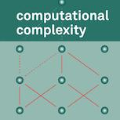We present a novel iterative decoding algorithm for Reed-Muller (RM) codes, which takes advantage of a graph representation of the code. Vertexes of the considered graph correspond to codewords, with two vertexes being connected by an edge if and only if the Hamming distance between the corresponding codewords equals the minimum distance of the code. The algorithm starts from a random node and uses a greedy local search to find a node with the best heuristic, e.g. Euclidean distance between the received vector and the corresponding codeword. In addition, the cyclic redundancy check can be used to terminate the search as soon as the correct codeword is found, leading to a decrease in the average computational complexity of the algorithm. Simulation results for both binary symmetric channel and additive white Gaussian noise channel show that the presented decoder achieves the performance of maximum likelihood decoding for RM codes of length up to 512 and for the second order RM codes of length up to 2048. Moreover, it is demonstrated that the considered decoding approach significantly outperforms state-of-the-art decoding algorithms of RM codes with similar computational complexity for a large number of cases.
翻译:我们为 Reed- Muller (RM) 代码提出了一个新颖的迭代解码算法,它利用了该代码的图形表达方式。 被考虑的图形的vertex 与代码字相对应, 只有相应的编码字词之间的暗淡距离等于代码的最小距离, 两个顶端才会被边缘连接。 该算法从随机节点开始, 并使用贪婪的本地搜索, 以找到一个具有最佳超动度的节点, 例如, 接收的矢量与相应的编码词之间的 Euclidean 距离。 此外, 周期冗余检查可以在找到正确的编码词后立即用于终止搜索, 导致算法的平均计算复杂性降低。 二进制对称频道和添加的白高斯噪音频道的模拟结果显示, 所展示的解码能够达到 RMM 代码的长度高达512 和 RM 长度为 的第二顺序的代码至 2048 的节点。 此外, 所考虑的解码解码法化方法大大超出 RMD 的复杂度。



